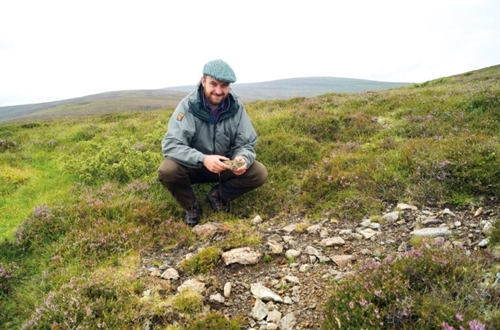3 Minute Read

As a conversation organisation, it’s easy focus on our own successes, whether its policy changes, research breakthroughs and backbreaking fieldwork seasons that keep our vital datasets running. What makes us even more excited is when people put that work into practice.
When you twin evidence-based research with the skills and passion of an individual or group of people on the ground, the results can be staggering. Through our Working Conservationist initiative, we have seen first-hand what that combination can achieve. Here are just some who have made a real difference:
Will and Judy Mitchell – helping lapwing in the Avon Valley
Tenant farmers in Hampshire’s Avon Valley, the Mitchell family is known locally for their livestock, particularly a suckler herd of mixed native and Simmental beef cattle. While the herd provide their main income, they are particularly proud of their lapwing. With advice from the GWCT, they have rewetted the meadows and manage their cattle to benefit the birds. “In winter, the cows have access to the nearby barn so if the weather gets bad they come inside which avoids churning up the ground. It’s amazing how they know to avoid the lapwing nests and pass that knowledge on to the younger animals”, says Will. The result is the ideal sward in spring with tussocks and large hoof prints which hold moisture and insects for the young chicks, so when the lapwing arrive, they actually choose the fields where the cows are.
Graham Denny – creating an oasis for turtle doves
On his 200-acre arable farm, Graham Denny lives by a simple maxim – there isn’t a day where the birds don’t have food on the ground. In addition to the 15 tonnes of hand-fed wheat for his pheasants, Graham’s Suffolk farm provides grain through his Higher Level Stewardship agreement, utilising an option developed by the GWCT, plus mixed seed and rape dressings. Many farmers would settle for seeing more birds on their land and carry on with the day job, but not Graham. With the help of his friend John Walshe, an accredited BTO bird ringer, they have ringed over 45,000 birds on the farm including 5,000 yellowhammers, 2,500 linnets and 5,000 greenfinches. The jewel in the crown, as far as Graham is concerned, is the nine calling male turtle doves and four pairs nesting last year.
Neville Gill – delivering for black grouse
It might surprise you to know that black grouse could once be found on lowland heath as far south as Hampshire. Today they are confined to the uplands, where 96% of the remaining English population live on the edges of moors keepered for red grouse. On one of these moors, Neville Gill is using a wealth of techniques to boost his black grouse numbers. He planted 1,500 trees by hand, including birch, hawthorn, rowan, willow and alder to provide winter food and cover. On the moor, in just 15 years, 13.6km of ditches have been filled, rewetting the blanket bog to benefit sphagnum moss and other peat-forming plants. Meanwhile, Neville has reduced the number of sheep from 500 to 230 and keeps them off the hill in winter to allow the moor to recover, controlled large areas of bracken and used a combination of cutting and burning to help heather and rare flora to thrive.
Alex Jenkins – keeping mountain hares
“We’ve always had a lot of mountain hares. It’s a success story for us,” says Alex Jenkins, headkeeper at Aberdeen’s Edinglassie Estate. In that part of North East Scotland, mountain hares are bucking the national trend and 35 times higher on driven grouse moors compared to unmanaged areas. Why? Good habitat and predator control. Around them, in the Cairngorms National Park, tree planting is the new trend, just as it was after World War Two. This not only threatens the loss of internationally significant heather, but a landscape that supports mountain hares as well as curlew and other wading birds.
John Warbuton-Lee and Trystan Edwards– boosting songbirds in the Welsh Mountains
Visit Gilar, John’s 500-acre farm in North Wales and the first thing that hits you is the cold. Rugged, north-facing farmland at altitudes of up to 1,700 ft, it doesn’t feel all that hospitable for people, let alone the small songbirds he has dedicated himself to supporting. As part of a new European Innovation Partnership project, along with the GWCT and Kings Seeds, the farm will see plots of seed-bearing plots sown at over 1,000 ft to prove what can be done. While farmland birds have fallen by 55% in Wales in the past 50 years, John and his farming partner, Trystan Edwards are working hard to buck the trend. One year in, with just one tonne of supplementary feed and six acres of cover crops, they have seen six times the number of farmland birds.